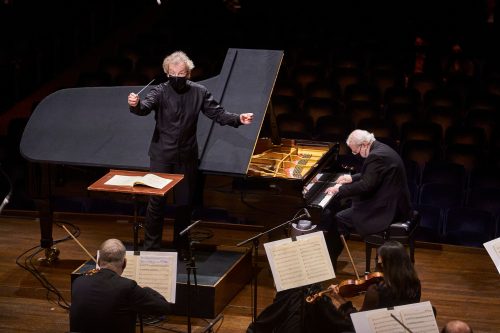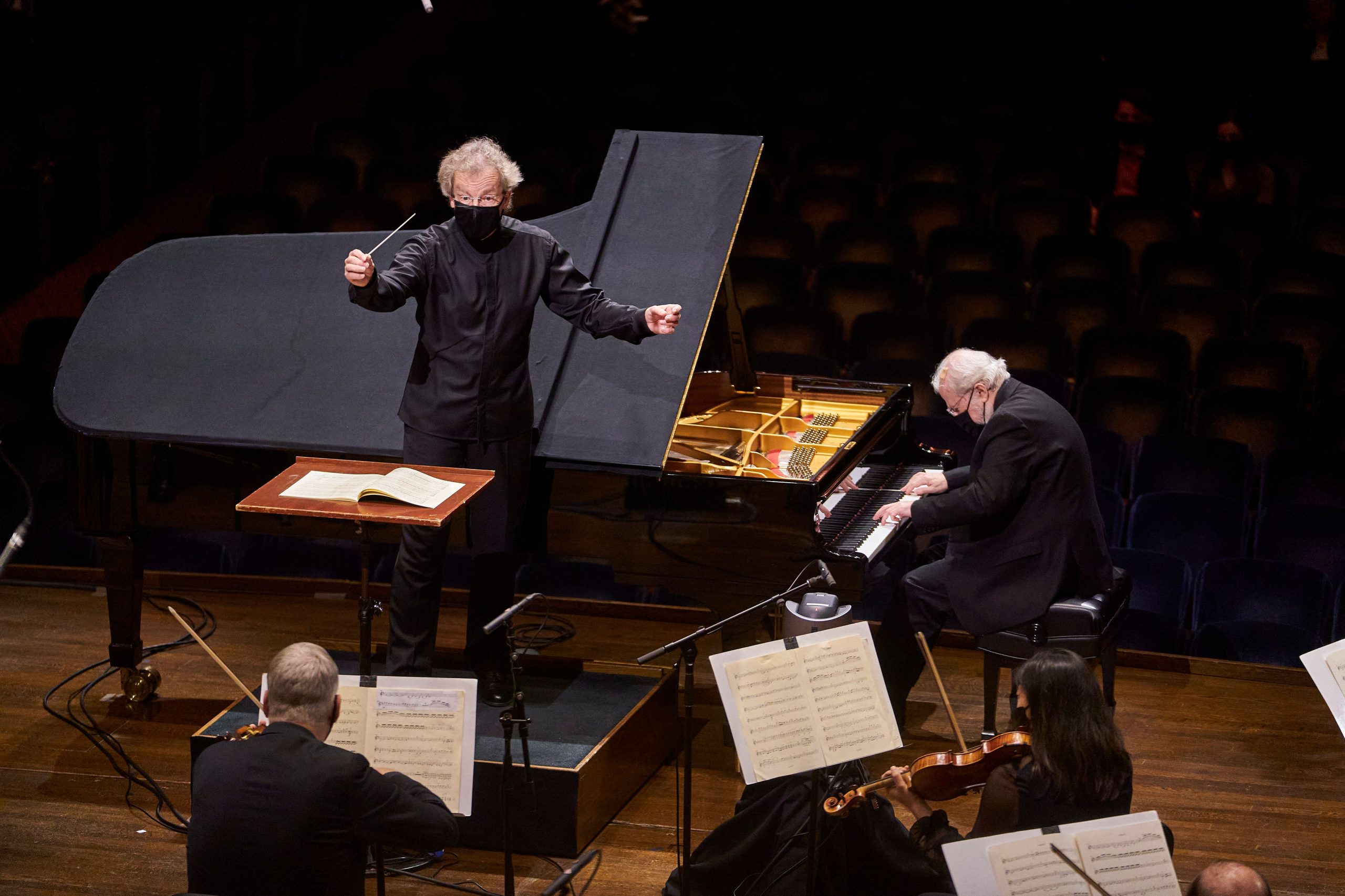 United States In Focus / Episode Three – Ax Plays Haydn: Emanuel Ax (piano), strings of the Cleveland Orchestra / Franz Welser-Möst (conductor). Severance Hall, Cleveland, Ohio, 5.11.2020, and reviewed as a livestream. (MSJ)
United States In Focus / Episode Three – Ax Plays Haydn: Emanuel Ax (piano), strings of the Cleveland Orchestra / Franz Welser-Möst (conductor). Severance Hall, Cleveland, Ohio, 5.11.2020, and reviewed as a livestream. (MSJ)

Haydn – Piano Concerto No.11 in D major
Bartók – Divertimento for Strings
Few pianists have remained in front of the public with greater consistency of accomplishment than Emanuel Ax, who has been making impressive recordings since the 1970s. Ax is one of the few modern pianists who maintains something of the conversational style of the great Artur Schnabel (1882-1951), as opposed to the focus on glittering athleticism all too common today. Hearing Ax in Haydn is always welcome, as he has played and recorded far more Haydn than most famous pianists. He recorded the Haydn Piano Concerto No.11 almost 30 years ago with the Franz Liszt Chamber Orchestra, and this performance is remarkably similar in grace and poise, a real comfort during dire times.
The big difference, though, is that Franz Welser-Möst opts to use all the strings of the orchestra, making the ensemble considerably larger than the one heard in Ax’s earlier recording. This lithe music does not necessarily benefit from the extra heft and, indeed, the classical nature of Haydn’s crisp writing exposes some slight imprecisions caused by the distancing of the players across the stage. A disappointment in terms of orchestral color comes from the omission of the oboe and horn parts Haydn originally included but, again, that is part of the safety regimen for performing during the pandemic. The loss of those parts, while not ideal, is not a serious issue. In the end, the joy of Ax performing Haydn with an overlarge complement of strings is far preferable to having more predictable, less humane repertory. And hearing this kind of music making at all right now is something for which to be grateful. When the world limits who you can embrace, give Ax’s Haydn a hug.
The pianist’s technique is undiminished: he deftly navigates Haydn’s scales and flourishes in the first movement with alert evenness. The grace of the slow movement is a bit weighty in the orchestral strings, but the audio compensates by keeping Ax closely focused in the microphones. And Ax certainly has the musical focus to make the back and forth with the strings work, even though many had to be distributed to the far corners of the stage. One could catch glimpses at times in the video of Ax making the effort to look around and connect with the spread-out players. It is no wonder that Ax is one of the Cleveland Orchestra’s most treasured guests: he shares the ensemble’s esthetic of giving everything to the music, not to personal grandstanding. The final Rondo all’Ungarese is as perky as anyone could want, with the strings matching the piano’s pace.
The orchestral feature of this concert was Bela Bartók’s Divertimento, as mis-named a work as Bartók ever wrote. Hugh Macdonald, the program commentator, is the latest in a long line of experts to try – and fail – to convince me that this piece is cheerful. The first movement strikes me as the expression of a person trying desperately to make himself relax but mostly failing. Welser-Möst’s direction doesn’t try to avoid the tension of the movement and rides the roller-coaster of moods deftly.
Everyone agrees that the slow movement is dark. Welser-Möst holds that darkness initially in reserve, but it is with a long-term plan in mind: the full weight of the Cleveland Orchestra’s strings is brought to bear with a crushing sonority at the climax. The finale, which Macdonald claims to ‘drive away all care’ is indeed lighter than the first two, though it has always struck me as still having a high level of anxiety. It contains some typical ‘Bartók pizzicatos’, where the strings are snapped against the fingerboard, and the Cleveland players relish the challenge of the composer’s zig-zagging lines. First Associate Concertmaster Peter Otto, in particular, is impressive in the numerous violin solos in the finale.
I would recommend you listen and make your own judgment about the nature of this music. It was written at a time – 1939 – of high stress in the world, and I can’t help but think that for all his determined control, Bartók regularly put a lot of very down-to-earth human emotion into his music, particularly here. The work’s tensions and desperate tries to stay positive resonate with the present moment, which is why I suspect Welser-Möst chose it.
The orchestra’s streaming platform, Adella, continues to have excellent audio and video production values. And the orchestra itself is quite simply one of the world’s finest. Subscriptions to the stream are available at Adella.Live. Program notes are given in a stripped-down, mobile-phone-friendly format, but the orchestra has added a Fall Broadcast Guide on their website (click here) with more reading material for those who miss the production values of the in-house program book.
Mark Sebastian Jordan
